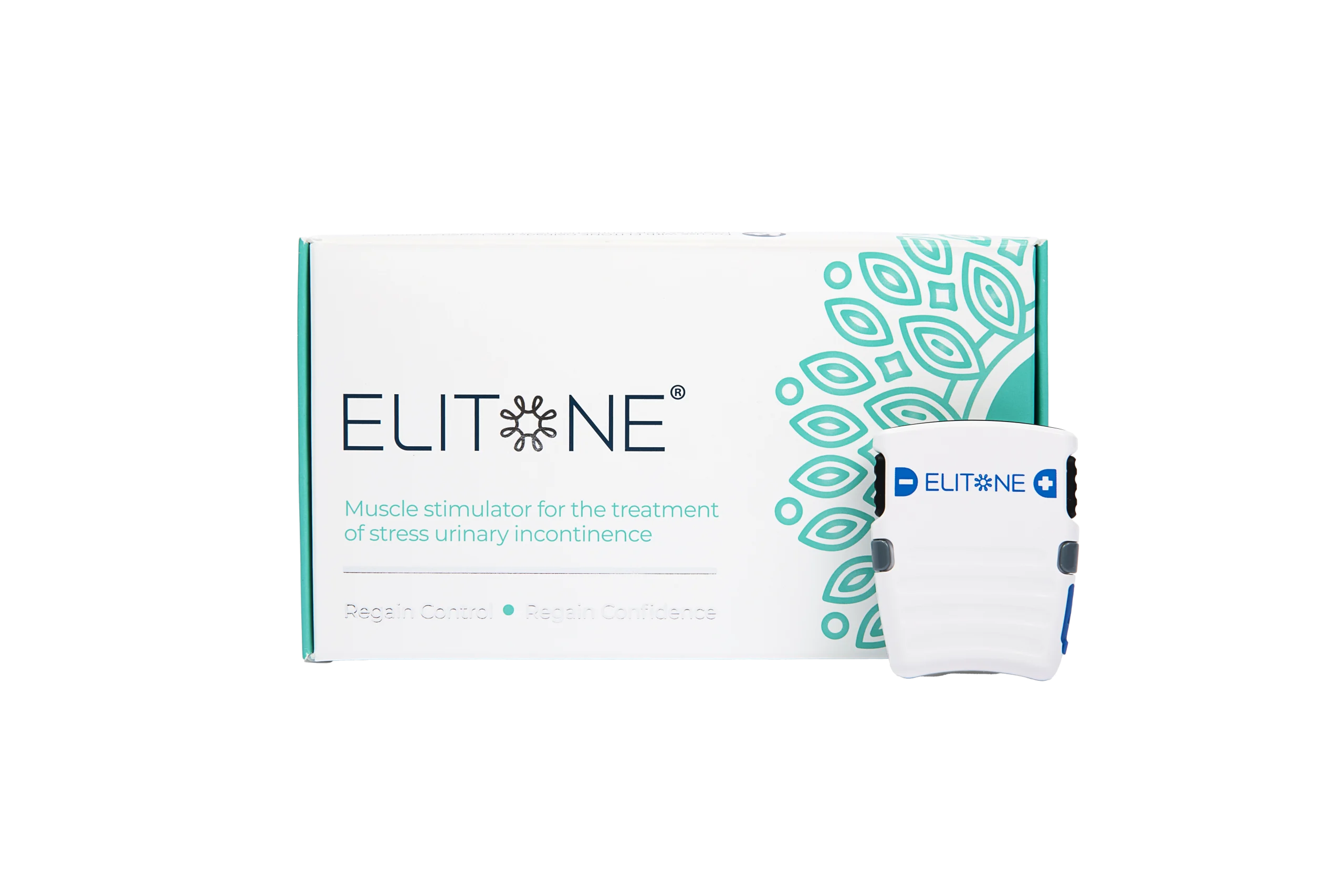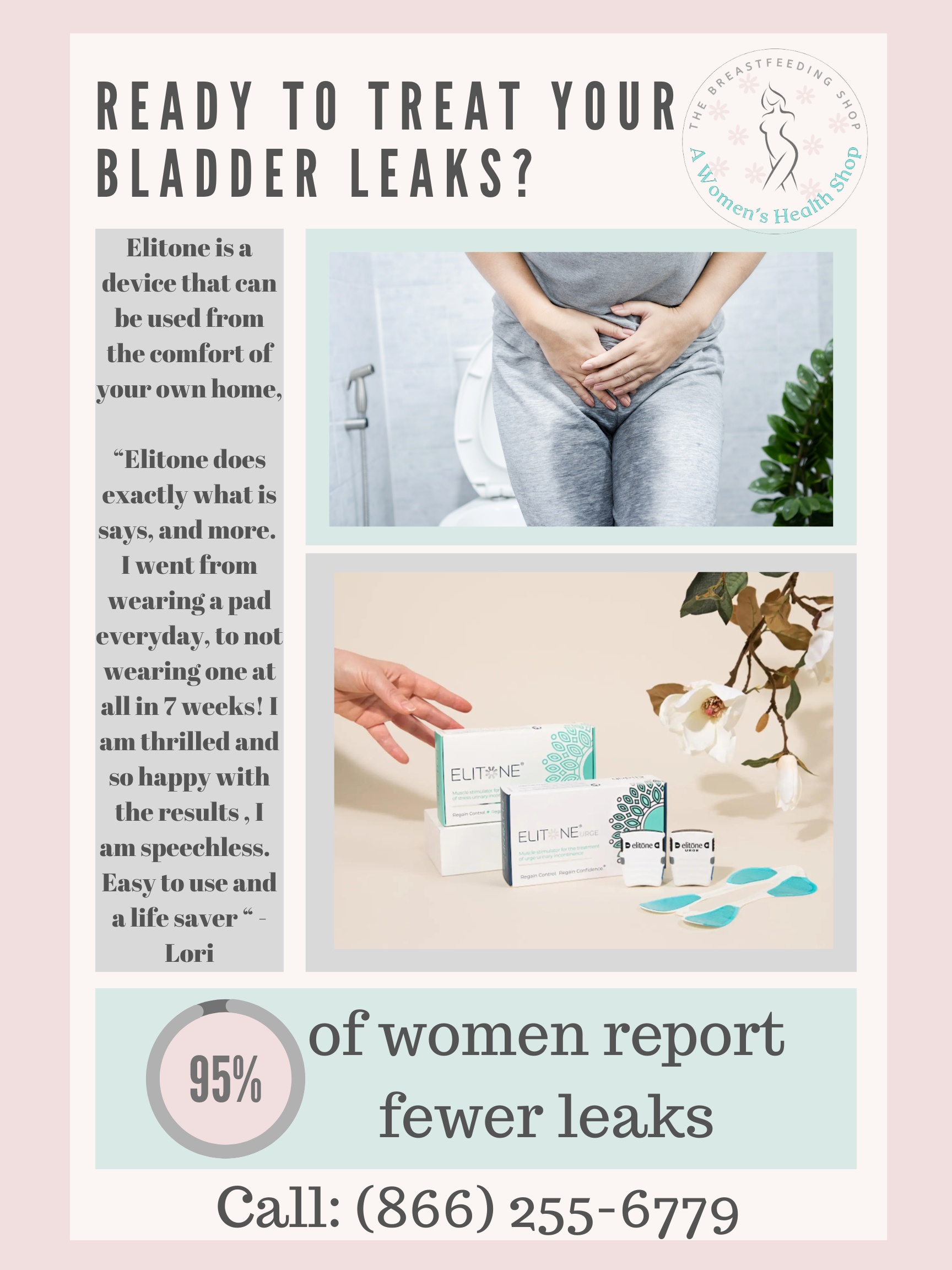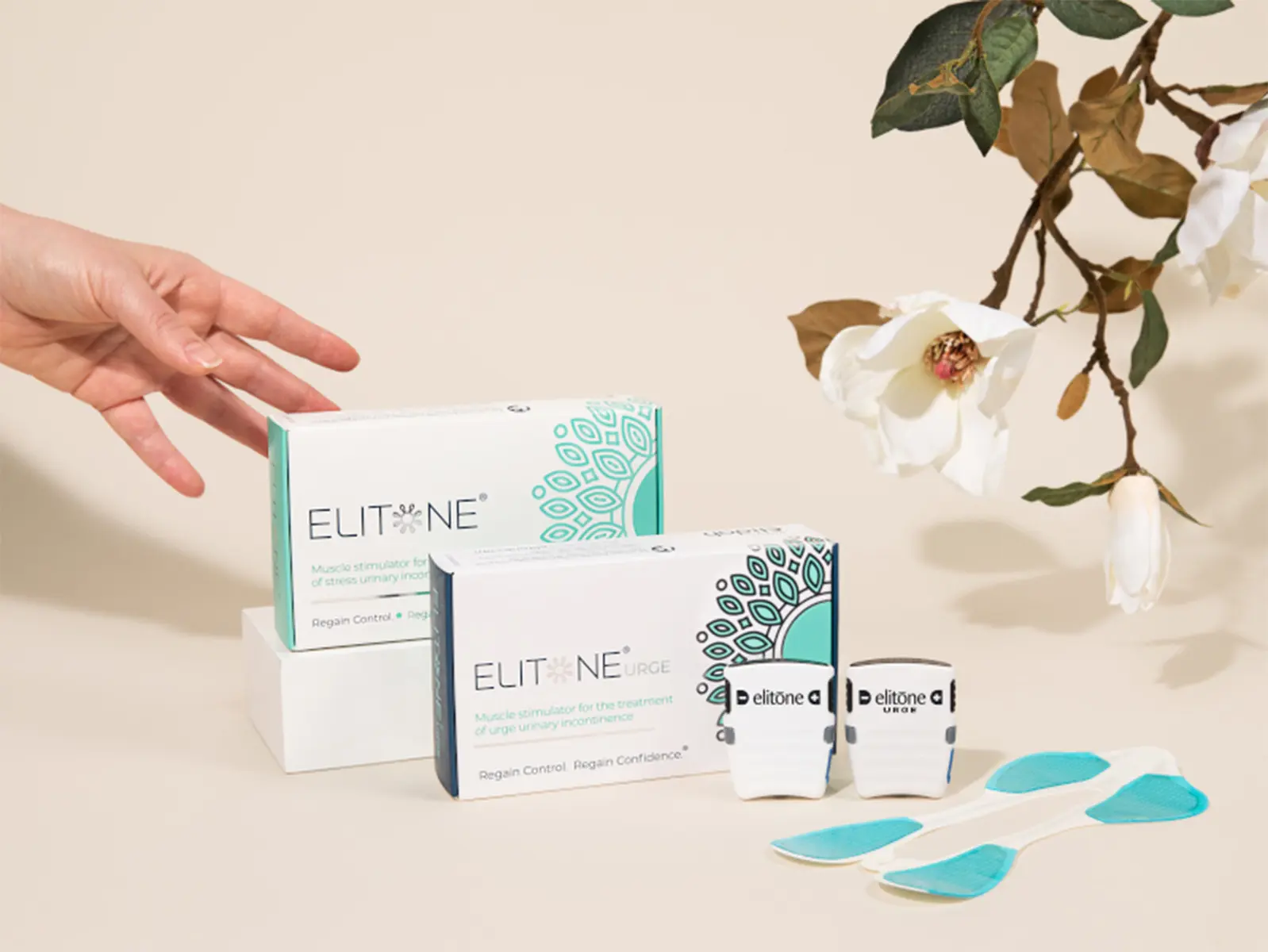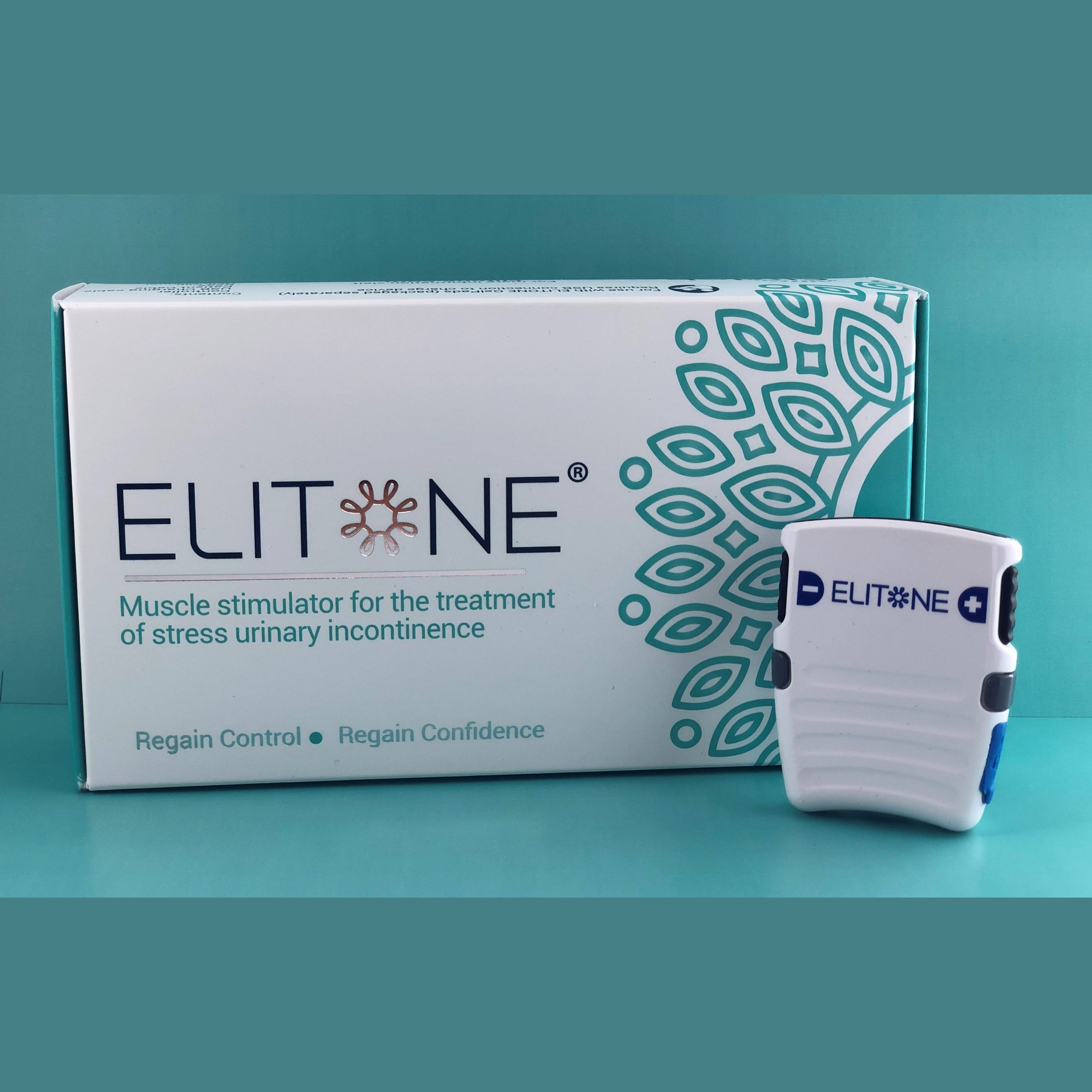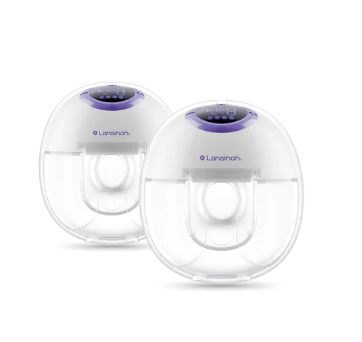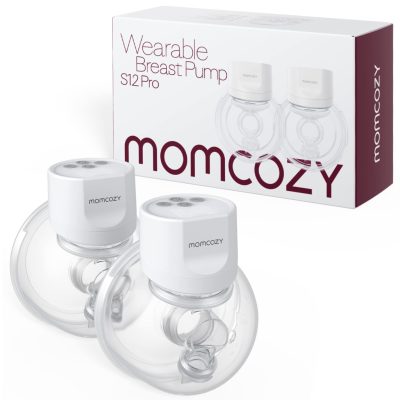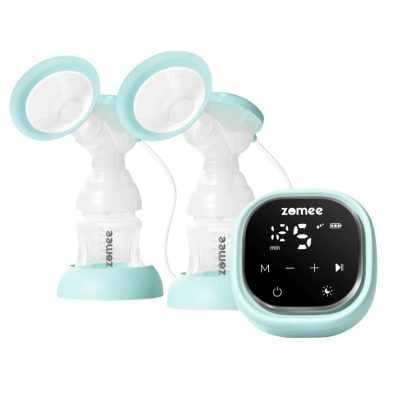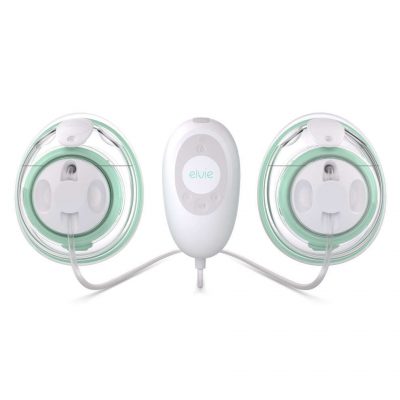Elitone: Pelvic Floor Exerciser
*May require additional documentation from your healthcare provider – we will work directly with your provider to obtain what you need.
Live life leak-free with Elitone—the only FDA-cleared external, at-home pelvic physical therapy solution for women with stress or urge incontinence who want to stay dry, comfortable, and confident.
Is Elitone Right For Me?
Elitone delivers pelvic floor muscle stimulation to effectively treat the most common types of incontinence, and the Elitone URGE does the same to treat overactive bladders (OAB).
If you have urinary leaks primarily caused by weak pelvic muscles under pressure (sneezing, exercising, jumping, etc.), then Elitone is for you. If you also experience urgency symptoms or have mixed incontinence, Elitone sends bladder-calming signals, making this product the right choice for you.
If you have leaks caused by a sudden, uncontrollable urination urge (overactive bladder leaks), then Elitone URGE is the right device for you. If you wake up at night to urinate, Elitone URGE may be for you.
>> See if Elitone is right for you by taking their free online assessment at Elitone.com.
How to Use the Elitone Device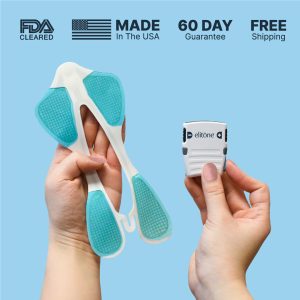
When using either device, just follow these three easy steps:
1. Apply: First, place the GelPad under your clothes on your perineal (public) area, exactly where you would place a pad. Elitone is safe for sensitive skin and doesn’t pull hair.
2. Adjust: The GelPad is connected to a tiny handheld controller, which you can then use to select a treatment level that’s right and comfortable for you.
3. Wear: Use 20 minutes a day, five times per week, for six weeks! The advanced neuromuscular stimulation directly targets internal muscle contraction while being gentle on the surface. During your treatment, feel free to go about your normal day while wearing the device. After 20 minutes, the controller turns off automatically.
Does Elitone Actually Work?
Clinical studies show that the Elitone devices reduced leaks for 95% of women and reduced pad use for 85% of women. The product also has a 4.5-star rating and thousands of glowing reviews, and less than 4% of buyers return it.
Compared to other methods of incontinence regulation, Elitone stands out. For example, while Kegel exercises have been a first-line recommendation for stress urinary incontinence (SUI), many women aren’t able to do them correctly to create any effective change. While surgical mesh can also work for SUI treatment, the complication rates are not negligible. Elitone beats out the competition when it comes to women’s health because it’s an at-home, easy-to-use, fast-acting, low-risk, non-invasive treatment.
Is the Elitone Device Safe?
Elitone is clinically tested, FDA-cleared, and doctor-recommended. It’s a completely safe way to get fewer leaks in just a few weeks.
Will the Elitone Feel Like Kegel Exercises?
Women report a tingling sensation where the GelPad contacts the skin. As the treatment intensity increases, Elitone users will feel a tightening internally, while Elitone URGE users will feel pulses for six seconds. After a rest period, this sequence repeats 100 times.
How Long Does It Take to See Results with Elitone?
Elitone is proven to reduce leakage by up to 70% or more in just six weeks of use.
Start by treating 20 minutes per day, 5 times per week, for 6 weeks. After that, most women begin to reduce their use to a maintenance mode, which can vary from 1-2 times per week to 1-2 times per month. Listen to your body and pay attention to when and how often you experience bladder leaks.
Are There Any Side Effects of Using Elitone?
The most common side effects of Elitone are skin irritation and muscle fatigue, which occur most often when the device is used more than the recommended amount. Both can be addressed by taking a few days off from treatment.
Consult your healthcare provider before using the device if:
- You have any serious illness or injury.
- You have an underlying neurological condition (e.g., Multiple Sclerosis, Parkinson’s disease).
- You tend to hemorrhage, following acute trauma or fracture.
- You take insulin for diabetes.
- You suffer from muscle or joint problems, including pelvic pain or a paravaginal defect.
- You suffer from suspected or diagnosed heart disease.
- You underwent a recent surgical procedure where muscle contraction may disrupt the healing process.

